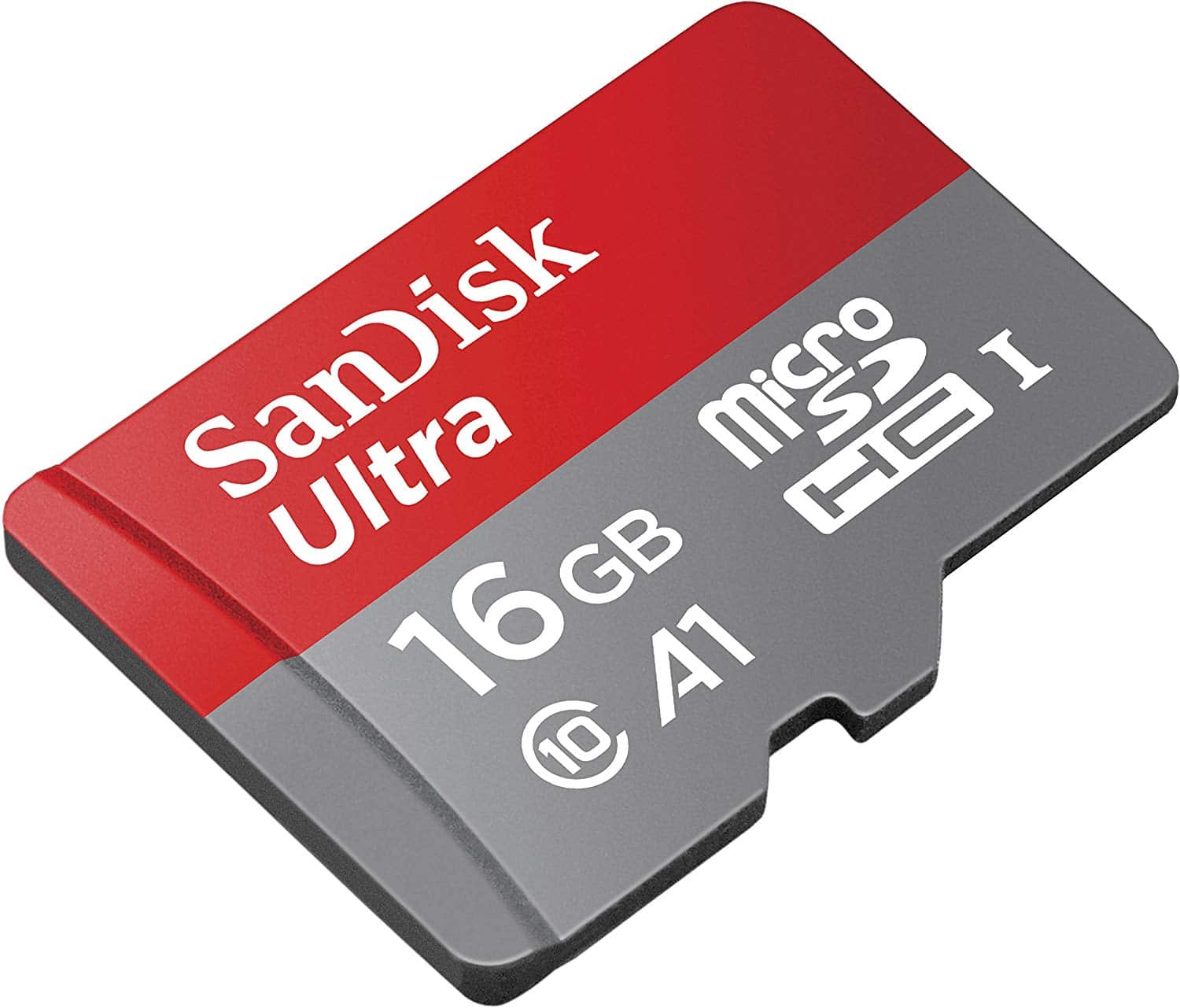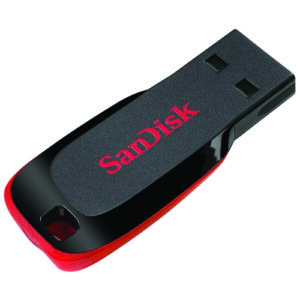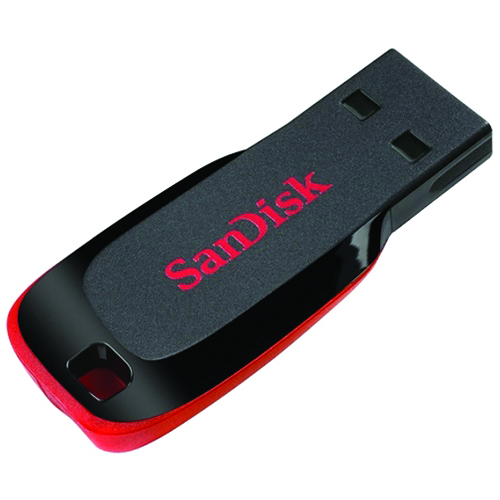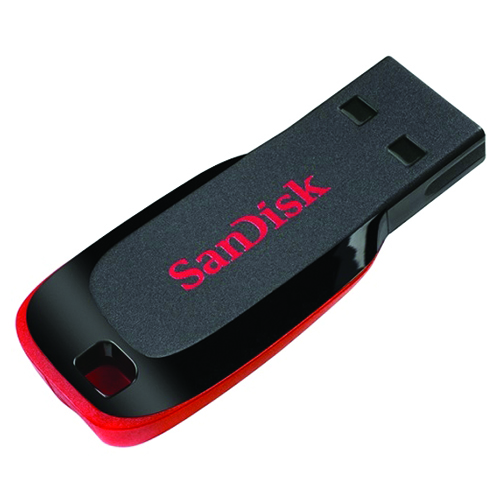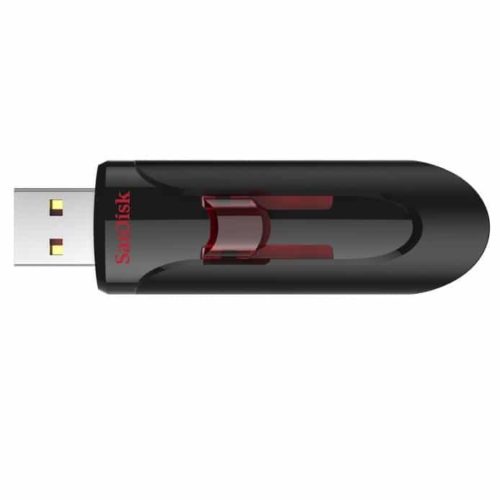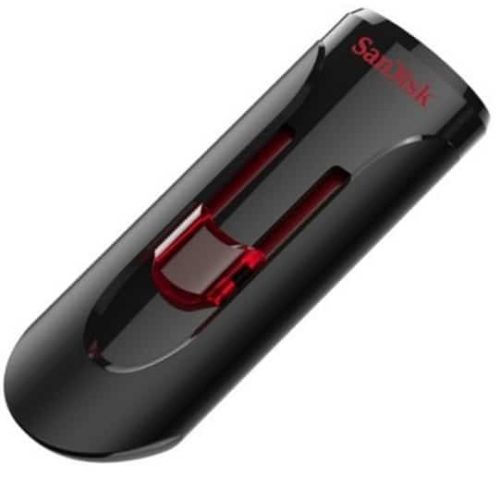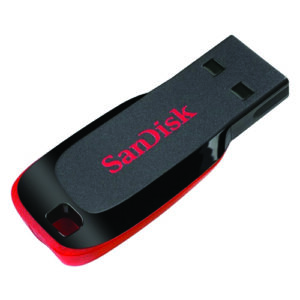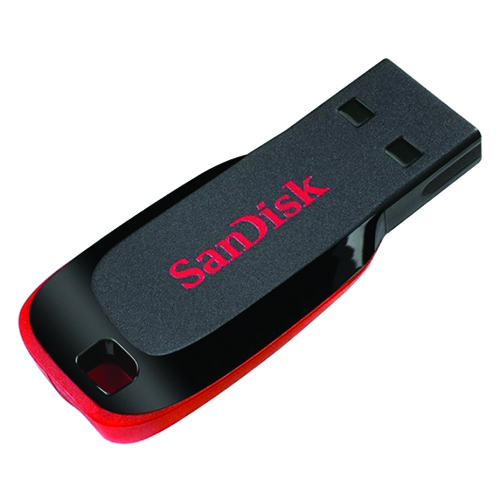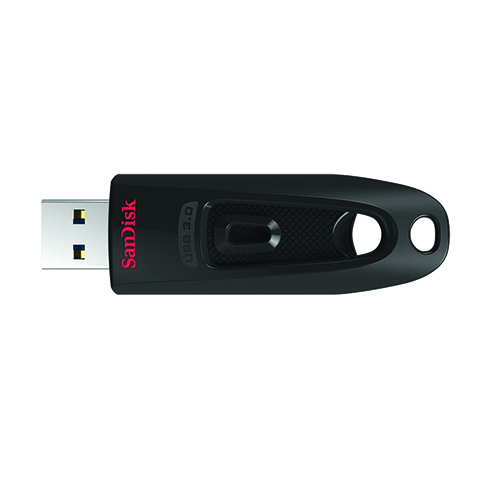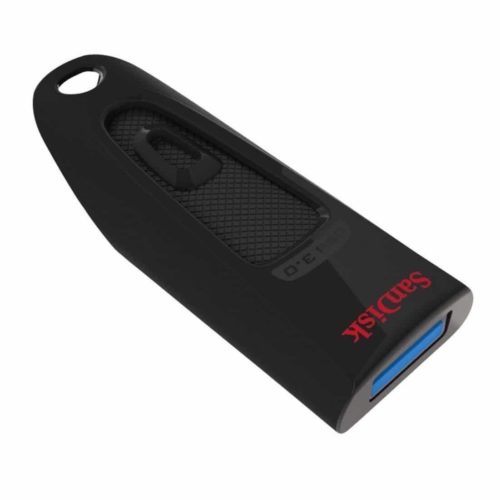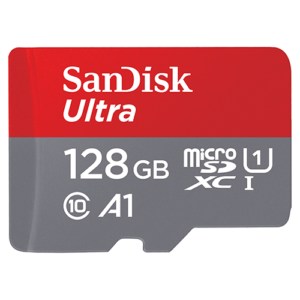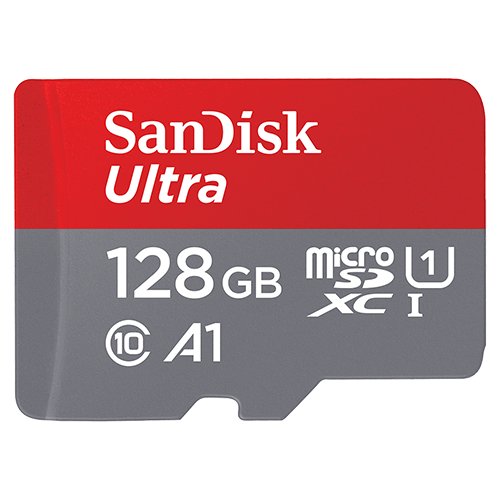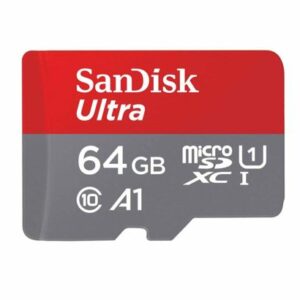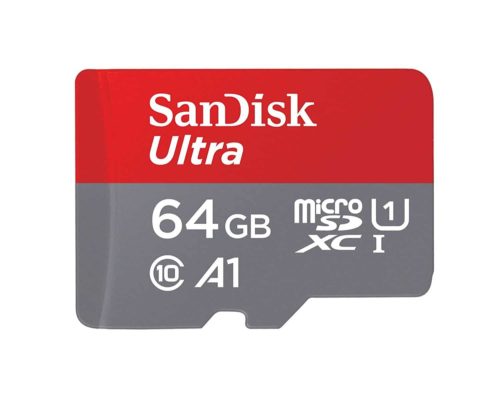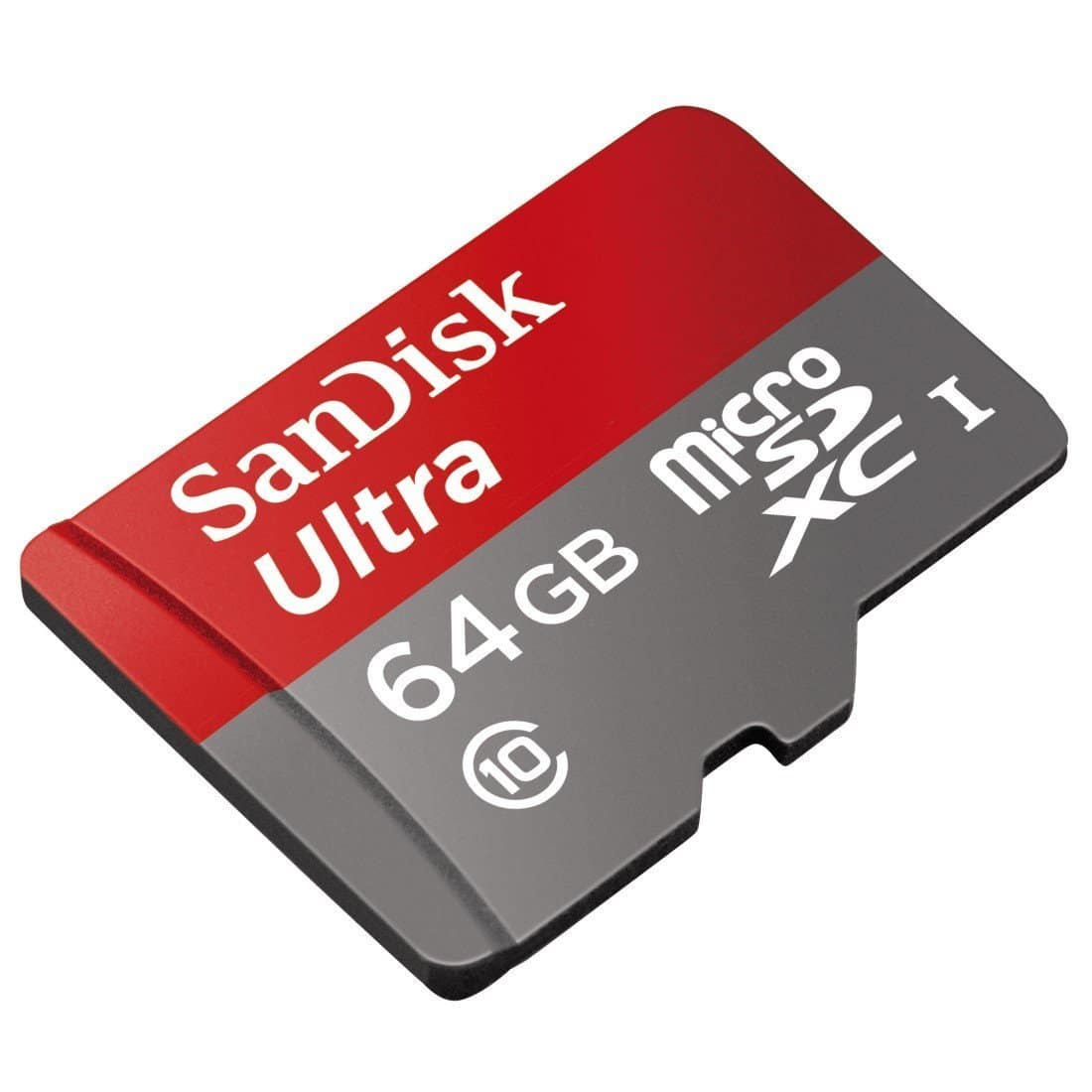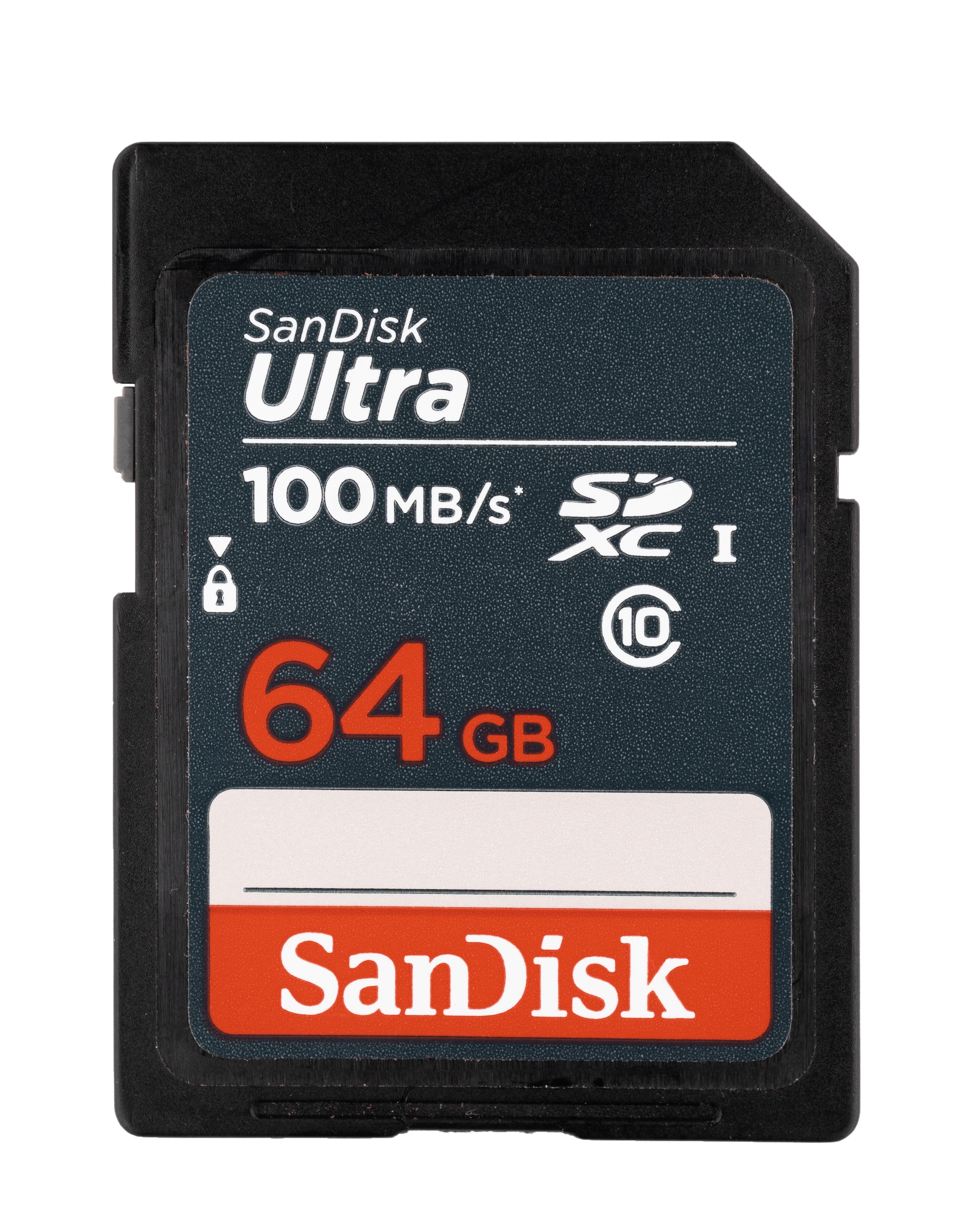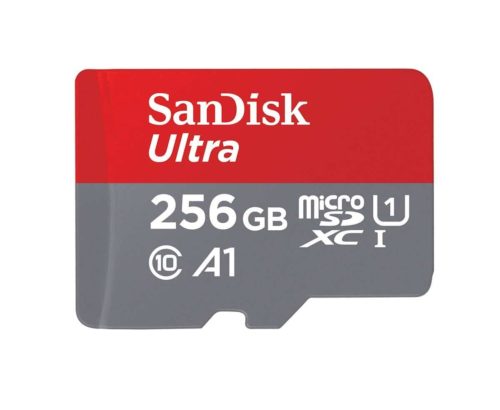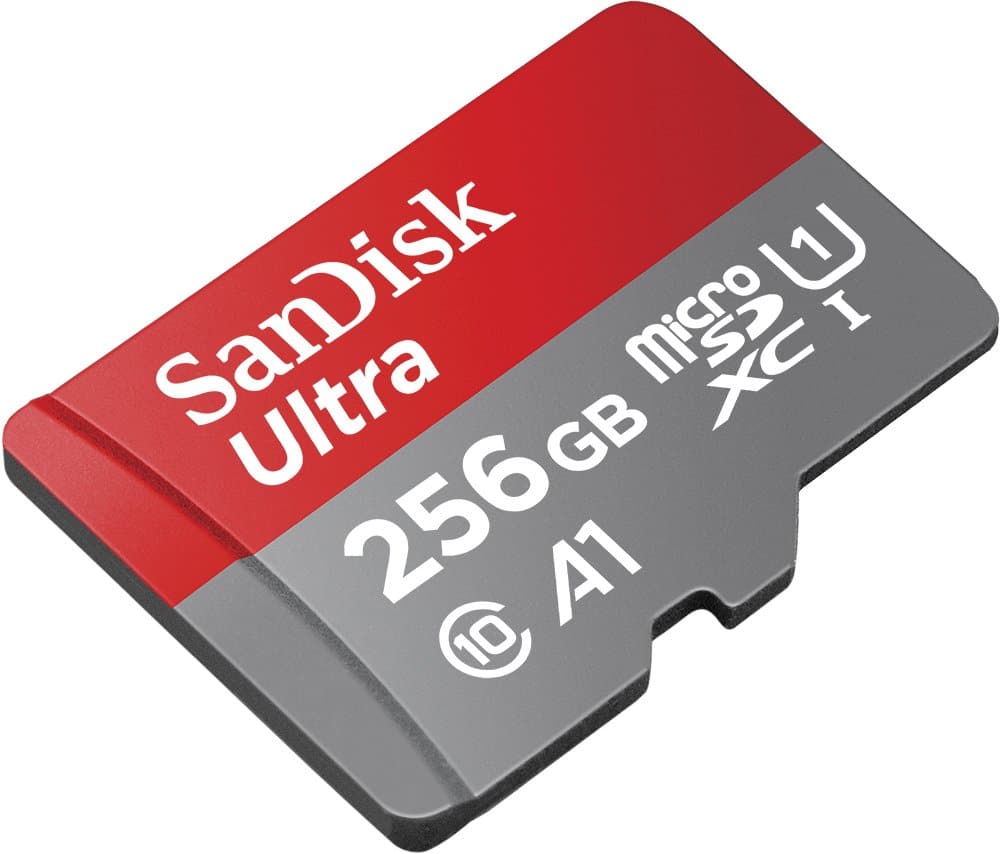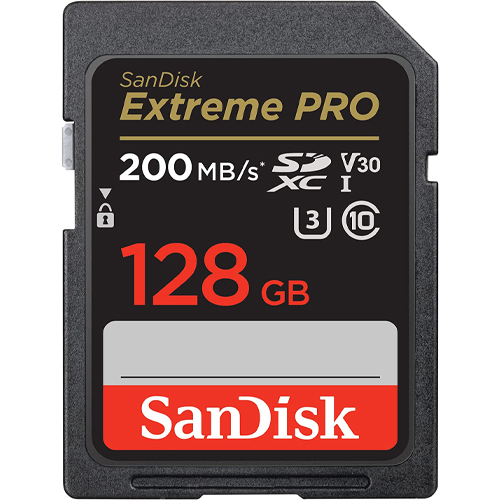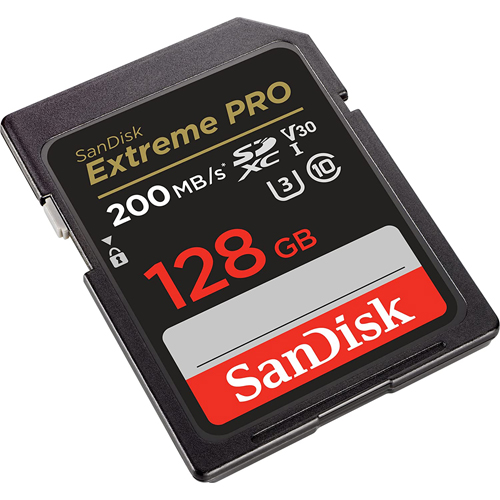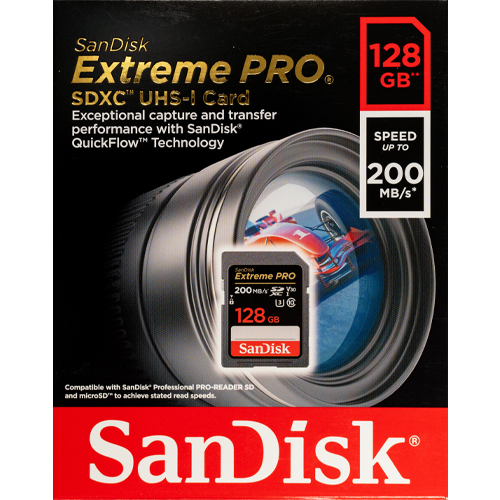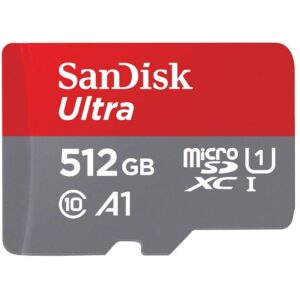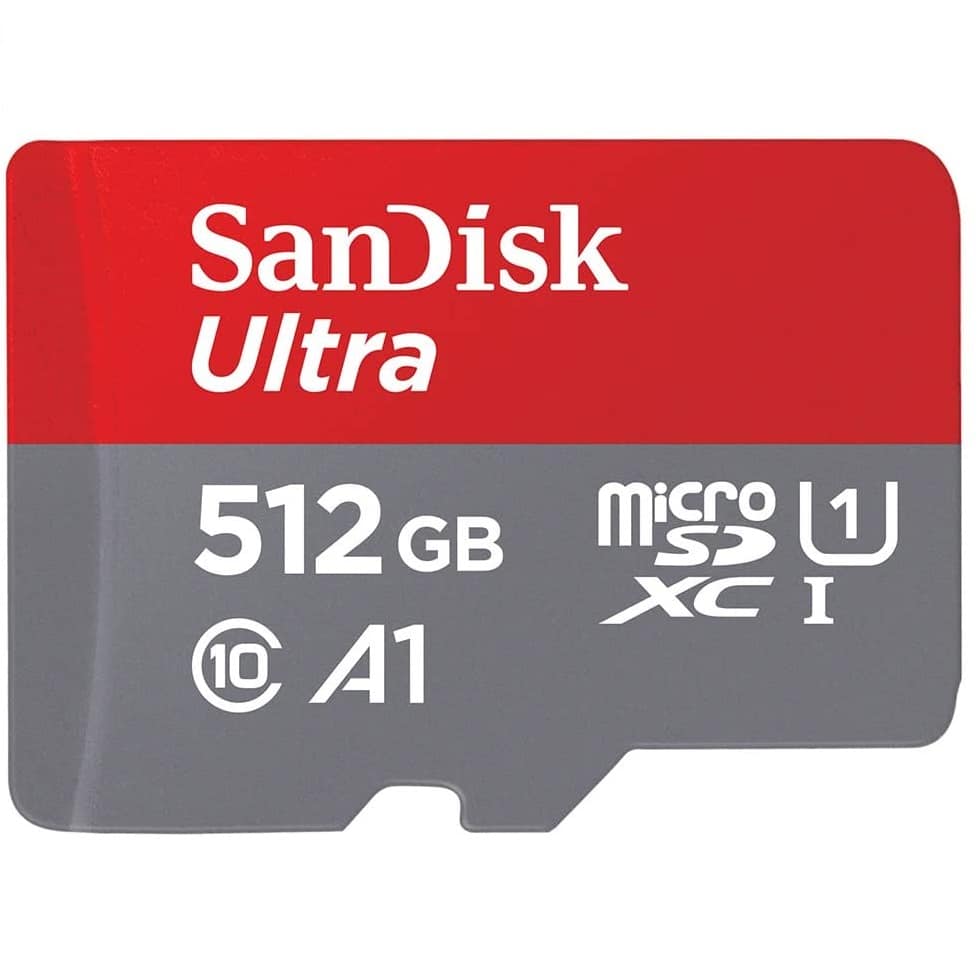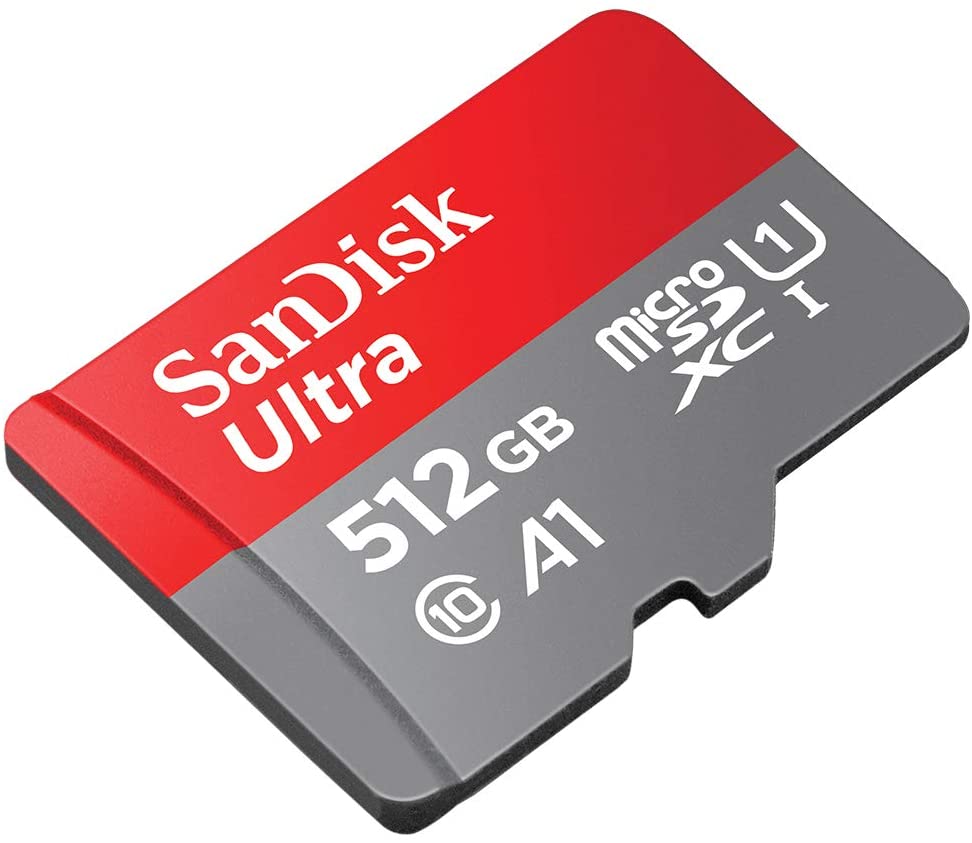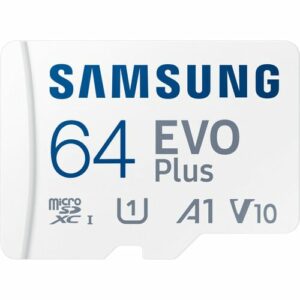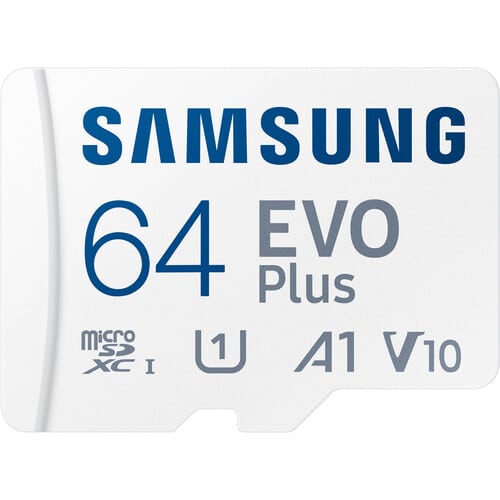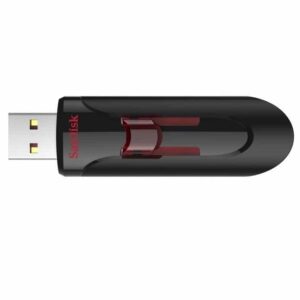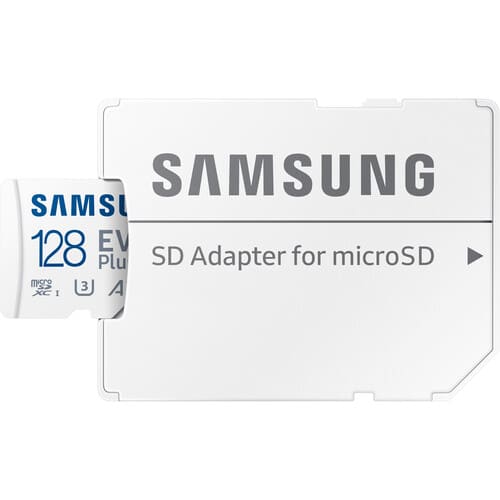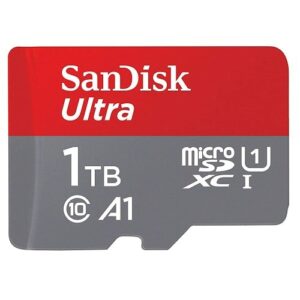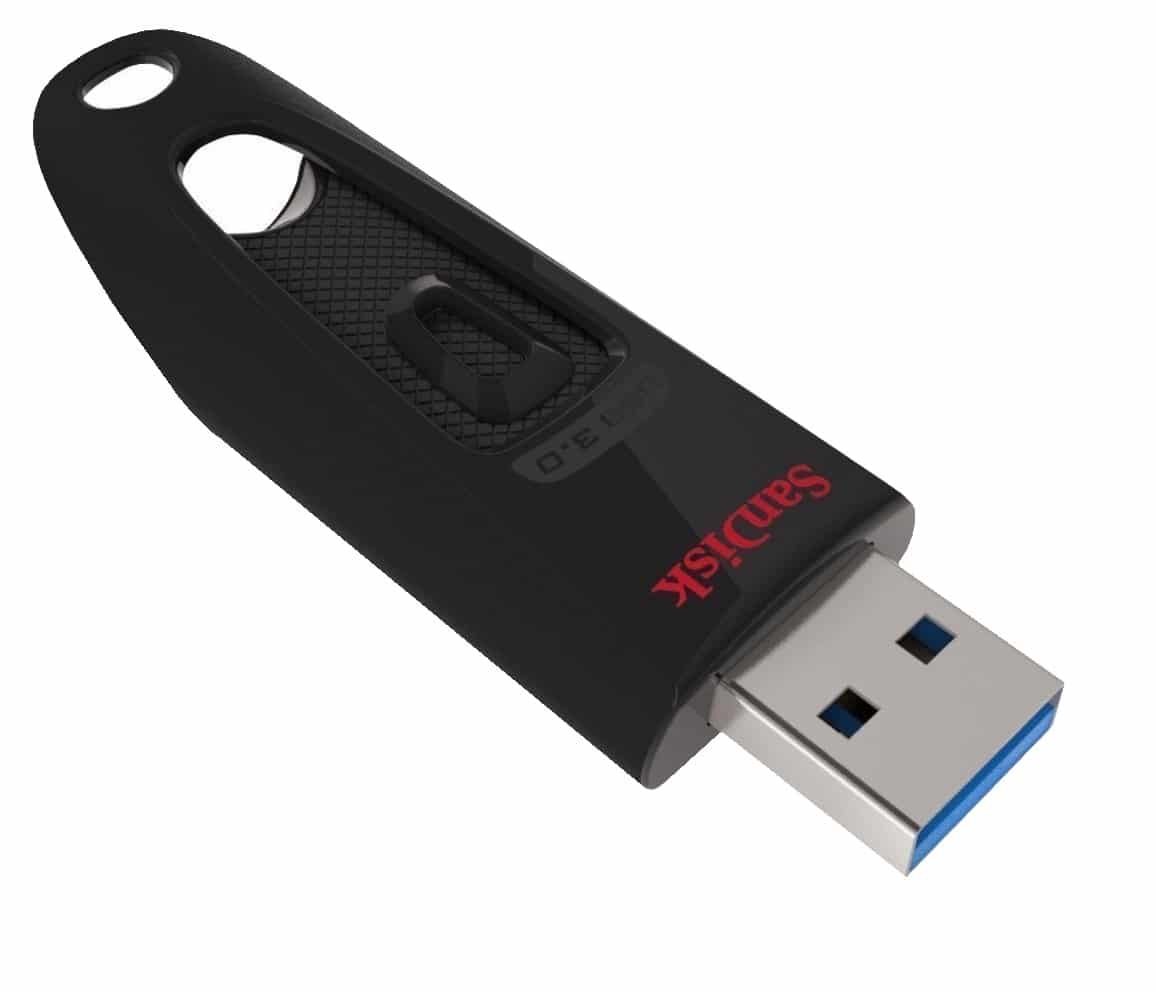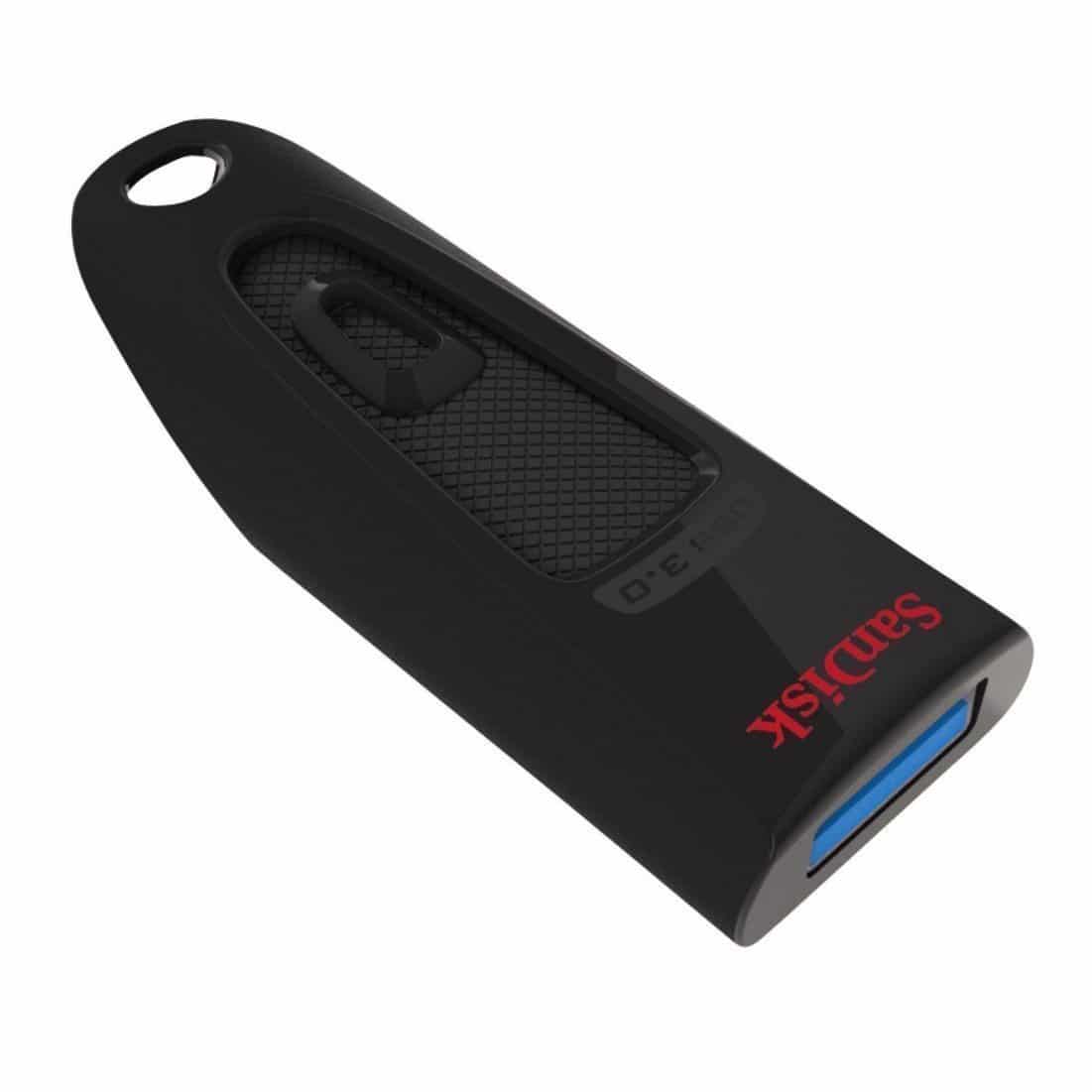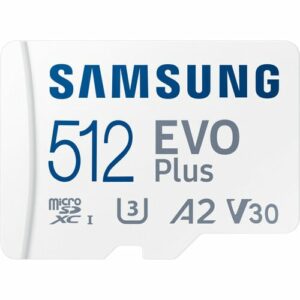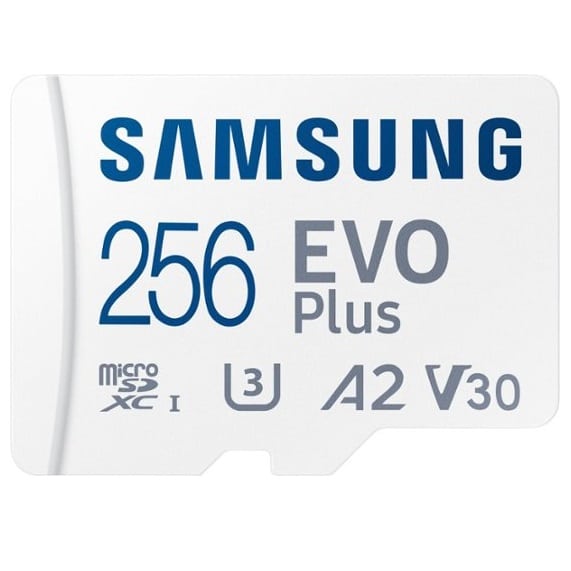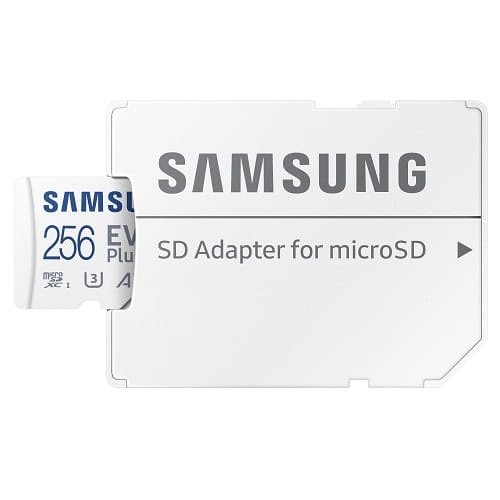Memory Cards for Police and Security
Choosing the right Memory Cards for Police and Security
Selecting the right memory cards for police and security like flash drives and SD cards is an important decision for any police precinct or private security company looking to balance functionality, security, and budget. There are several key factors to consider and pitfalls to avoid when deciding which brand, capacity, and type of device is best suited for your specific organizational needs. There are many use cases for a precinct that might want to use a flash drive for memory storage or exchange. We curated a list of great products, flash drives and more, based on popularity from other precincts we work with.
Showing all 28 resultsSorted by popularity
-
MicroSD Cards
16GB Microsd Ultra Sandisk Memory Card (SDSQUAR-016G-GN6MN)
SanDisk Ultra MicroSD 16GB UAR
The SanDisk Ultra MicroSD is a high quality 16GB MicroSD card that is Class 10, U1, and A1 rated. This card is ideal for picture and video recording and is popular for Android smartphones, tablets and computers and works with GoPro cameras. It also works great with trail cameras and dash cams for video feed storage.
Specifications
- SKU: SDSQUAR-016G-GN6MN
- Class: 10
- Form Factor: microSDHC
- UHS BUS Speed: UHS-I
- Read Speed: Max 90MB/s
- UHS Speed Class: U1
- App Performance Class: A1
- Video Format Capability: Full HD Video
- Operating Temperature: -13° – 185° F (-25°C – 85° C)
Estimated Number of Photos & Videos
JPG Photos: 4,310 photos
RAW Photos: 295 photos
HD Video: 210 minutes
4k Video: 40 minutes**This product comes in original retail packaging ready for resale. EBS return policy linked here.
Model # SDSQUAR-016G-GN6MN
NOTE: Does NOT include SD Adapter. For adapter sold separately click here
(2 reviews)From: $6.20
(Pricing as low as $5.35) Select options This product has multiple variants. The options may be chosen on the product page -
USB Flash Drives
8GB Sandisk Cruzer Blade Flash Drive (SDCZ50-008G-B35)
SanDisk 8GB Cruzer Blade Flash Drive USB 2.0. Vastly affordable option for personal, business, or bulk use.
Transfer, distribute, and backup your projects and files. Large enough for media and video storage and backups as well. The standard speed for USB 2.0 has a bandwidth or signaling speed of 60MB/s.
Specifications
- Model Number: SDCZ50-008G-B35
- USB Connection: USB Type A
- Interface: 2.0
- Dimensions: (L x W x H) 1.63 x 0.69 x 0.29 in.
- Operating Temperature: 32° – 95° F
- Material: Plastic
- Cover: No Cover
- Keyring Loop: Yes
- Indicator Light: No
**This product comes in original retail packaging ready for resale.
Model # SDCZ50-008G-B35
(17 reviews)From: $4.05
(Pricing as low as $3.05) Select options This product has multiple variants. The options may be chosen on the product page -
USB Flash Drives
16GB Sandisk Cruzer Blade Flash Drive (SDCZ50-016G-B35)
SanDisk 16GB Cruzer Blade Flash Drive
Store your photos, videos, files, and more on this SanDisk USB Blade Flash Drive.
Specifications
- Model Number: SDCZ50-016G-B35
- USB Connection: USB Type A
- Interface: 2.0
- Dimensions: (L x W x H) 1.63 x 0.69 x 0.29 in.
- Operating Temperature: 32° – 95° F
- Material: Plastic
- Cover: No Cover
- Keyring Loop: Yes
- Indicator Light: No
Estimated Number of Photos & Videos
JPG Photos: 4,310 photos
RAW Photos: 295 photos
HD Video: 210 minutes
4k Video: 40 minutes**This product comes in original retail packaging ready for resale.
Model # SDCZ50-016G-B35
(16 reviews)From: $4.15
(Pricing as low as $3.15) Select options This product has multiple variants. The options may be chosen on the product page -
MicroSD Cards
32GB MicroSDHC Ultra Sandisk Memory Card (SDSQUA4-032G-GN6MN)
SanDisk Ultra 32GB Micro SDHC Class 10 Performance For Full HD Video 1080p Read speeds up to 120MB.
Great for Android phones including the Samsung Galaxy S10, S9, S8, S8 Note, S7, S7 Edge, and many more.
Specifications
- SKU: SDSQUA4-032G-GN6MN
- Class: 10
- Form Factor: microSDHC
- UHS BUS Speed: UHS-I
- Read Speed: Max 120MB/s
- UHS Speed Class: U1
- App Performance Class: A1
- Video Format Capability: Full HD Video
- Operating Temperature: -13° – 185° F (-25°C – 85° C)
Estimated Number of Photos & Videos
JPG Photos: 8,620 photos
RAW Photos: 595 photos
HD Video: 425 minutes
4k Video: 85 minutes**This product comes in original retail packaging ready for resale. EBS return policy linked here.
Model # SDSQUA4-032G-GN6MN
NOTE: Does NOT include SD Adapter For adapter sold separately click here
(1 review)From: $5.60
(Pricing as low as $4.60) Select options This product has multiple variants. The options may be chosen on the product page -
USB Flash Drives
16GB Sandisk Cruzer Glide 3.0 Flash Drive (SDCZ600-016G-B35)
SanDisk 16GB Cruzer Glide 3.0 Flash Drive – Great for faster speeds than 2.0 drives.
Specifications
- Model Number: SDCZ600-016G-B35
- USB Connection: USB Type A
- Interface: 3.0
- Dimensions: (L x W x H) 2.37 X 0.82 X 0.44 in.
- Operating Temperature: 32° – 95° F
- Material: Plastic
- Cover: Retractable
- Keyring Loop: Yes
- Indicator Light: No
Estimated Number of Photos & Videos
JPG Photos: 4,310 photos
RAW Photos: 295 photos
HD Video: 210 minutes
4k Video: 40 minutes**This product comes in original retail packaging ready for resale.
Model # SDCZ600-016G-B35
(1 review)From: $4.90
(Pricing as low as $3.95) Select options This product has multiple variants. The options may be chosen on the product page -
USB Flash Drives
32GB Sandisk Cruzer Blade Flash Drive (SDCZ50-032G-B35)
SanDisk 32GB Cruzer Blade Flash Drive.
Specifications
- Model Number: SDCZ50-032G-B35
- USB Connection: USB Type A
- Interface: 2.0
- Dimensions: (L x W x H) 1.63 x 0.69 x 0.29 in.
- Operating Temperature: 32° – 95° F
- Material: Plastic
- Cover: No Cover
- Keyring Loop: Yes
- Indicator Light: No
Estimated Number of Photos & Videos
JPG Photos: 8,620 photos
RAW Photos: 595 photos
HD Video: 425 minutes
4k Video: 85 minutes**This product comes in original retail packaging ready for resale.
Model # SDCZ50-032G-B35
(4 reviews)From: $4.60
(Pricing as low as $3.60) Select options This product has multiple variants. The options may be chosen on the product page -
USB Flash Drives
128GB Sandisk Ultra 3.0 Flash Drive (SDCZ48-128G-U46)
The SanDisk 128GB Flash Drive Ultra 3.0 takes transferring files to a new level. Use this reliable drive for your files, photos, videos, and more.
Specifications
- Model Number: SDCZ48-128G-U46
- USB Connection: USB Type A
- Interface: 3.0
- Transfer Speed: Max 130MB/s
- Dimensions: (L x W x H) 2.87 X 0.87 X 0.42 in.
- Operating Temperature: 32°F – 113° F
- Material: Plastic
- Cover: Retractable
- Keyring Loop: Yes
- Indicator Light: No
Estimated Number of Photos & Videos
JPG Photos: 34,490 photos
RAW Photos: 2,380 photos
HD Video: 1,705 minutes
4k Video: 340 minutes**This product comes in original retail packaging ready for resale.
Model # SDCZ48-128G-U46
(0 reviews)From: $9.35
(Pricing as low as $8.35) Select options This product has multiple variants. The options may be chosen on the product page -
USB Flash Drives
32GB Sandisk Cruzer Glide 3.0 Flash Drive (SDCZ600-032G-B35)
SanDisk 32GB Cruzer Glide 3.0 Flash Drive – Great for faster speeds than 2.0 drives.
Specifications
- Model Number: SDCZ600-032G-B35
- USB Connection: USB Type A
- Interface: 3.0
- Dimensions: (L x W x H) 2.37 X 0.82 X 0.44 in.
- Operating Temperature: 32° – 95° F
- Material: Plastic
- Cover: Retractable
- Keyring Loop: Yes
- Indicator Light: No
Estimated Number of Photos & Videos
JPG Photos: 8,620 photos
RAW Photos: 595 photos
HD Video: 425 minutes
4k Video: 85 minutes**This product comes in original retail packaging ready for resale.
Model # SDCZ600-032G-B35
(0 reviews)From: $5.20
(Pricing as low as $4.20) Select options This product has multiple variants. The options may be chosen on the product page -
MicroSD Cards
128GB MicroSDXC Ultra Sandisk Memory Card (SDSQUAB-128G-GN6MN)
The 128GB SanDisk Ultra UAC MicroSD Card comes in several sizes ranging from 64GB to 512GB. The 128GB SanDisk Ultra microSDXC is an extended SD storage size with good transfer speeds for photo and video. This card works great with DSLRs, point-and-shoot cameras, compact cameras, other products, and more. Perfect for family photos and videos. This card is UHS-1 rated with Class 10 specification. Ideal for a wide range of uses in several products. This SanDisk Ultra card is a great memory card for almost anything. Exceptional picture quality and video performance. 128GB SanDisk Ultra UAB.
Specifications
- SKU: SDSQUAB-128G-GN6MN
- Class: 10
- Form Factor: microSDXC
- UHS BUS Speed: UHS-I
- Read Speed: Max 140MB/s
- UHS Speed Class: U1
- App Performance Class: A1
- Video Format Capability: Full HD Video
- Operating Temperature: -13° – 185° F (-25°C – 85° C)
Estimated Number of Photos & Videos
JPG Photos: 34,490 photos
RAW Photos: 2,380 photos
HD Video: 1,705 minutes
4k Video: 340 minutes**This product comes in original retail packaging ready for resale. EBS return policy linked here.
Model # SDSQUAB-128G-GN6MN
NOTE: Does NOT include SD Adapter For adapter sold separately click here
(0 reviews)From: $10.50
(Pricing as low as $9.50) Select options This product has multiple variants. The options may be chosen on the product page -
MicroSD Cards
64GB MicroSDXC Ultra Sandisk Memory Card (SDSQUAB-064G-GN6MN)
The 64GB SanDisk Ultra UAB MicroSD Card comes in several sizes ranging from 64GB to 512GB. The 64GB SanDisk Ultra microSDXC is an extended SD storage size with good transfer speeds for photo and video. This card works great with DSLRs, point-and-shoot cameras, compact cameras, other products, and more. Perfect for family photos and videos. This card is UHS-1 rated with Class 10 specification. Ideal for a wide range of uses in several products. This SanDisk Ultra card is a great memory card for almost anything. Exceptional picture quality and video performance. 64GB SanDisk Ultra UAB.
Specifications
- SKU: SDSQUAB-064G-GN6MN
- Class: 10
- Form Factor: microSDXC
- UHS BUS Speed: UHS-I
- Read Speed: Max 140MB/s
- UHS Speed Class: U1
- App Performance Class: A1
- Video Format Capability: Full HD Video
- Operating Temperature: -13° – 185° F (-25°C – 85° C)
Estimated Number of Photos & Videos
JPG Photos: 17,245 photos
RAW Photos: 1,190 photos
HD Video: 850 minutes
4k Video: 170 minutes**This product comes in original retail packaging ready for resale. EBS return policy linked here.
Model # SDSQUAB-064G-GN6MN
NOTE: Does NOT include SD Adapter For adapter sold separately click here
(0 reviews)From: $6.55
(Pricing as low as $5.70) Select options This product has multiple variants. The options may be chosen on the product page -
USB Flash Drives
64GB Sandisk Ultra 3.0 Flash Drive (SDCZ48-064G-U46)
The SanDisk Flash Drive Ultra 3.0 is the perfect economical choice for a 3.0 USB. Great speeds at a great price.
Specifications
- Model Number: SDCZ48-064G-U46
- USB Connection: USB Type A
- Interface: 3.0
- Transfer Speed: Max 130MB/s
- Dimensions: (L x W x H) 2.87 X 0.87 X 0.42 in.
- Operating Temperature: 32°F – 113° F
- Material: Plastic
- Cover: Retractable
- Keyring Loop: Yes
- Indicator Light: No
Estimated Number of Photos & Videos
JPG Photos: 17,245 photos
RAW Photos: 1,190 photos
HD Video: 850 minutes
4k Video: 170 minutes**This product comes in original retail packaging ready for resale.
Model # SDCZ48-064G-U46
(2 reviews)From: $6.05
(Pricing as low as $5.05) Select options This product has multiple variants. The options may be chosen on the product page -
USB Flash Drives
64GB Sandisk Cruzer Glide 3.0 Flash Drive (SDCZ600-064G-B35)
SanDisk 64GB Cruzer Glide 3.0 Flash Drive – Great for faster speeds than 2.0 drives.
Specifications
- Model Number: SDCZ600-064G-B35
- USB Connection: USB Type A
- Interface: 3.0
- Dimensions: (L x W x H) 2.37 X 0.82 X 0.44 in.
- Operating Temperature: 32° – 95° F
- Material: Plastic
- Cover: Retractable
- Keyring Loop: Yes
- Indicator Light: No
Estimated Number of Photos & Videos
JPG Photos: 17,245 photos
RAW Photos: 1,190 photos
HD Video: 850 minutes
4k Video: 170 minutes**This product comes in original retail packaging ready for resale.
Model # SDCZ600-064G-B35
(0 reviews)From: $5.65
(Pricing as low as $4.65) Select options This product has multiple variants. The options may be chosen on the product page -
SD Cards
64GB SDXC Ultra Sandisk Memory Card Class 10 (SDSDUNR-064G-GN3IN)
High Quality 64GB SD Ultra SanDisk Class 10 Memory Card. This is a great economical choice for 64GB of storage for trail cameras, DSLR Cameras, Point-and-shoot, and more.
Specifications
- Model Number: SDSDUNR-064G-GN3IN
- Class: 10
- Form Factor: SDXC
- UHS BUS Speed: UHS-I
- Read Speed: Max 100MB/s
- UHS Speed Class: U1
- Video Format Capability: Full HD Video
- Operating Temperature: -13° – 185° F (-25°C – 85° C)
Water-proof, Temperature proof, X-ray proof, Shock proof
Estimated Number of Photos & Videos
JPG Photos: 17,245 photos
RAW Photos: 1,190 photos
HD Video: 850 minutes
4k Video: 170 minutes**This product comes in original retail packaging ready for resale. EBS return policy linked here.
Model # SDSDUNR-064G-GN3IN
(0 reviews)From: $7.35
(Pricing as low as $6.35) Select options This product has multiple variants. The options may be chosen on the product page -
MicroSD Cards
256GB Micro SDXC Ultra Sandisk Memory Card (SDSQUAC-256G-GN6MN)
The 256GB SanDisk Ultra UAC MicroSD Card comes in several sizes ranging from 64GB to 512GB. The 256GB SanDisk Ultra microSDXC is an extended SD storage size with good transfer speeds for photo and video. This card works great with DSLRs, point-and-shoot cameras, compact cameras, other products, and more. Perfect for family photos and videos. This card is UHS-1 rated with Class 10 specification. Ideal for a wide range of uses in several products. This SanDisk Ultra card is a great memory card for almost anything. Exceptional picture quality and video performance. 256GB SanDisk Ultra UAC.
Specifications
- SKU: SDSQUAC-256G-GN6MN
- Class: 10
- Form Factor: microSDXC
- UHS BUS Speed: UHS-I
- Read Speed: Max 150MB/s
- UHS Speed Class: U1
- App Performance Class: A1
- Video Format Capability: Full HD Video
- Operating Temperature: -13° – 185° F (-25°C – 85° C)
Estimated Number of Photos & Videos
JPG Photos: 68,985 photos
RAW Photos: 4,765 photos
HD Video: 3,410 minutes
4k Video: 680 minutes**This product comes in original retail packaging ready for resale. EBS return policy linked here.
Model # SDSQUAC-256G-GN6MN
NOTE: Does NOT include SD Adapter For adapter sold separately click here
(0 reviews)From: $17.55
(Pricing as low as $16.55) Select options This product has multiple variants. The options may be chosen on the product page -
USB Flash Drives
128GB Sandisk Cruzer Glide 3.0 Flash Drive (SDCZ600-128G-B35)
SanDisk 128GB Cruzer Glide 3.0 Flash Drive – Great for faster speeds than 2.0 drives.
Specifications
- Model Number: SDCZ600-128G-B35
- USB Connection: USB Type A
- Interface: 3.0
- Dimensions: (L x W x H) 2.37 X 0.82 X 0.44 in.
- Operating Temperature: 32° – 95° F
- Material: Plastic
- Cover: Retractable
- Keyring Loop: Yes
- Indicator Light: No
Estimated Number of Photos & Videos
JPG Photos: 34,490 photos
RAW Photos: 2,380 photos
HD Video: 1,705 minutes
4k Video: 340 minutes**This product comes in original retail packaging ready for resale.
Model # SDCZ600-128G-B35
(0 reviews)From: $8.95
(Pricing as low as $7.95) Select options This product has multiple variants. The options may be chosen on the product page -
SD Cards
128GB SD Extreme Pro SDXC UHS-I Sandisk Memory Card (SDSDXXD-128G-GN4IN)
The new Extreme Pro SD Card from SanDisk has a 128GB capacity. This updated version has a 200MB/s maximum read speed. That’s more than 17% faster! Some features of this card are that it is waterproof, temperature proof, shock proof, and X-ray proof. Perfect for beginner to professional DSLR cameras and mirrorless cameras. Works great with family cameras and point and shoot cameras. Super high quality speeds with a large SDXC capacity. This card is rated for U3 and Class 10 speeds. The ideal card for all types of devices that take a full size SD Card like computers and digital cameras. The Extreme Pro SD card can be used for expandable storage on laptops or used to put pictures on digital photo frames. You can pair this 128GB card with compatible Blu-ray players, home theaters, and more to expand the storage and hold thousands of songs and hundreds of movies. Extreme Pro 128GB XXD.
Specifications
- Model Number: SDSDXXD-128G-GN4IN
- Class: 10
- Format: SDXC
- UHS BUS Speed: UHS-I
- Read Speed: Max 200MB/s
- Write Speed: Max 90MB/s
- UHS Speed Class: U3
- Video Speed Class: V30
- Video Format Capability: 4K UHD
- Operating Temperature: -13° – 185° F (-25°C – 85° C)
Water-proof, Temperature proof, X-ray proof, Shock proof
Estimated Number of Photos & Videos
JPG Photos: 34,490 photos
RAW Photos: 2,380 photos
HD Video: 1,705 minutes
4k Video: 340 minutes**This product comes in original retail packaging ready for resale. EBS return policy linked here.
Model # SDSDXXD-128G-GN4IN
(0 reviews)From: $18.25
(Pricing as low as $17.40) Select options This product has multiple variants. The options may be chosen on the product page -
MicroSD Cards
512GB Micro SanDisk Ultra SDXC Memory Card (SDSQUAC-512G-GN6MN)
The 512GB SanDisk Ultra UAC MicroSD Card comes in several sizes ranging from 64GB to 512GB. The 512GB SanDisk Ultra microSDXC is an extended SD storage size with good transfer speeds for photo and video. This card works great with DSLRs, point-and-shoot cameras, compact cameras, other products, and more. Perfect for family photos and videos. This card is UHS-1 rated with Class 10 specification. Ideal for a wide range of uses in several products. This SanDisk Ultra card is a great memory card for almost anything. Exceptional picture quality and video performance. 512GB SanDisk Ultra UAC.
Specifications
- SKU: SDSQUAC-512G-GN6MN
- Class: 10
- Form Factor: microSDXC
- UHS BUS Speed: UHS-I
- Read Speed: Max 150MB/s
- UHS Speed Class: U1
- App Performance Class: A1
- Video Format Capability: Full HD Video
- Operating Temperature: -13° – 185° F (-25°C – 85° C)
Estimated Number of Photos & Videos
JPG Photos: 137,970 photos
RAW Photos: 9,530 photos
HD Video: 6,825 minutes
4k Video: 1,365 minutes**This product comes in original retail packaging ready for resale. EBS return policy linked here.
Model # SDSQUAC-512G-GN6MNNOTE: Does NOT include SD Adapter For adapter sold separately click here(0 reviews)From: $32.80
(Pricing as low as $31.80) Select options This product has multiple variants. The options may be chosen on the product page -
MicroSD Cards
64GB Micro Samsung EVO Plus SDXC Memory Card (MB-MC64SA)
64GB Samsung EVO Plus Micro SD Card, designed to meet all your storage needs with unmatched performance and versatility. This high-speed card comes equipped with a Samsung adapter for compatibility with a wide range of devices, including computers, handheld gaming consoles, tablets, and cameras. Whether you’re transferring files, capturing memories, or gaming on the go, the 64GB Samsung EVO Plus microSD Card adapts effortlessly to your lifestyle. Experience lightning-fast read and write speeds of up to 160 MB/s, making file transfers nearly instantaneous. This means you can capture every moment in real time, from 4K UHD videos to high-resolution photos, without missing a beat. The EVO Plus ensures that your memories are stored securely and transferred quickly, so you can focus on creating more of them.
Available in storage capacities ranging from 64GB to a massive 1TB, the EVO Plus is designed to grow with you. Whether you’re saving family photos, recording epic adventures, or downloading your favorite games, you’ll have all the space you need. With the right amount of storage, this microSD card is perfect for preserving what matters most to you, all in one place. The EVO Plus is equipped with advanced U3, Class 10, A2, V30, and UHS-I interface technology, providing ultra-high speeds and smooth performance.
Extensively compatible with a wide range of devices, from action cams like GoPro and drones from DJI , the EVO Plus is a versatile and dependable choice for all your storage needs. Whether you’re a professional photographer, gamer, or tech enthusiast, this microSD card delivers the speed, capacity, and durability you need.
Specifications
- Model Number: MB-MC64SA
- Class: 10
- Form Factor: microSDXC
- UHS BUS Speed: UHS-I
- Read Speed: Max 160MB/s
- UHS Speed Class: U1
- Video Speed Class: V10
- App Performance Class: A1
- Operating Temperature: -13° – 185° F (-25°C – 85° C)
Water proof, Temperature proof, X-ray proof, Wear out proof, Magnetic proof, Drop proof
Estimated Number of Photos & Videos
JPG Photos: 17,245 photos
RAW Photos: 1,190 photos
HD Video: 850 minutes
4k Video: 170 minutes**This product comes in original retail packaging ready for resale. EBS return policy linked here.
Model # MB-MC64SA(0 reviews)From: $9.50
(Pricing as low as $8.50) Select options This product has multiple variants. The options may be chosen on the product page -
USB Flash Drives
256GB Sandisk Cruzer Glide 3.0 Flash Drive (SDCZ600-256G-B35)
SanDisk 256GB Cruzer Glide 3.0 Flash Drive. Fast 3.0 speeds at an affordable price point.
Specifications
- Model Number: SDCZ600-256G-B35
- USB Connection: USB Type A
- Interface: 3.0
- Dimensions: (L x W x H) 2.37 X 0.82 X 0.44 in.
- Operating Temperature: 32° – 95° F
- Material: Plastic
- Cover: Retractable
- Keyring Loop: Yes
- Indicator Light: No
Estimated Number of Photos & Videos
JPG Photos: 68,985 photos
RAW Photos: 4,765 photos
HD Video: 3,410 minutes
4k Video: 680 minutes**This product comes in original retail packaging ready for resale.
Model # SDCZ600-256G-B35
(0 reviews)From: $15.05
(Pricing as low as $14.20) Select options This product has multiple variants. The options may be chosen on the product page -
MicroSD Cards
128GB Micro Samsung EVO Plus SDXC Memory Card (MB-MC128SA)
128GB Samsung EVO Plus MicroSD Card, engineered for exceptional storage solutions with top-tier performance and versatility. This high-speed card includes a Samsung adapter, ensuring compatibility with a broad spectrum of devices such as computers, handheld gaming consoles, tablets, and cameras. Whether you’re transferring files, capturing precious moments, or gaming on the go, the 128GB Samsung EVO Plus MicroSD Card seamlessly integrates into your daily life. With lightning-fast read and write speeds of up to 160 MB/s, file transfers are nearly instantaneous, allowing you to record every detail in real time, from 4K UHD videos to high-resolution photos, without missing a moment. The EVO Plus ensures your memories are securely stored and swiftly transferred, so you can stay focused on making new ones.
Available in a range of capacities from 64GB to a substantial 1TB, the EVO Plus is designed to expand with your needs. Whether you’re preserving family memories, capturing epic adventures, or downloading your favorite games, you’ll find ample space for everything. This microSD card is ideal for keeping what matters most all in one place. Equipped with advanced U3, Class 10, A2, V30, and UHS-I interface technology, the EVO Plus offers ultra-high speeds and smooth performance.
With extensive compatibility across a variety of devices, including action cameras like GoPro and drones from DJI, the EVO Plus is a versatile and reliable choice for all your storage needs. Whether you’re a professional photographer, gamer, or tech enthusiast, this microSD card delivers the speed, capacity, and durability you require.
Specifications
- Model Number: MB-MC128SA
- Class: 10
- Form Factor: microSDXC
- UHS BUS Speed: UHS-I
- Read Speed: Max 160MB/s
- UHS Speed Class: U3
- Video Speed Class: V30
- App Performance Class: A2
- Operating Temperature: -13° – 185° F (-25°C – 85° C)
Water proof, Temperature proof, X-ray proof, Wear out proof, Magnetic proof, Drop proof
Estimated Number of Photos & Videos
JPG Photos: 34,490 photos
RAW Photos: 2,380 photos
HD Video: 1,705 minutes
4k Video: 340 minutes**This product comes in original retail packaging ready for resale. EBS return policy linked here.
Model # MB-MC128SA(0 reviews)From: $12.65
(Pricing as low as $11.65) Select options This product has multiple variants. The options may be chosen on the product page -
USB Flash Drives
256GB Sandisk Ultra 3.0 Flash Drive (SDCZ48-256G-U46)
The SanDisk 256GB Flash Drive Ultra 3.0 takes transferring files to a new level. Use this reliable drive for your files, photos, videos, and more.
Specifications
- Model Number: SDCZ48-256G-U46
- USB Connection: USB Type A
- Interface: 3.0
- Transfer Speed: Max 130MB/s
- Dimensions: (L x W x H) 2.87 X 0.87 X 0.42 in.
- Operating Temperature: 32°F – 113° F
- Material: Plastic
- Cover: Retractable
- Keyring Loop: Yes
- Indicator Light: No
Estimated Number of Photos & Videos
JPG Photos: 68,985 photos
RAW Photos: 4,765 photos
HD Video: 3,410 minutes
4k Video: 680 minutes**This product comes in original retail packaging ready for resale.
Model # SDCZ48-256G-U46
(0 reviews)From: $16.10
(Pricing as low as $15.10) Select options This product has multiple variants. The options may be chosen on the product page -
MicroSD 1TB
1TB Micro SanDisk Ultra SDXC Memory Card (SDSQUAC-1T00-GN6MN)
The 1TB SanDisk Ultra UAB MicroSD Card comes in several sizes ranging from 64GB to 1TB. The 1TB SanDisk Ultra microSDXC is an extended SD storage size with good transfer speeds for photo and video. This card works great with DSLRs, point-and-shoot cameras, compact cameras, other products, and more. Perfect for family photos and videos. This card is UHS-1 rated with Class 10 specification. Ideal for a wide range of uses in several products. This SanDisk Ultra card is a great memory card for almost anything. Exceptional picture quality and video performance. 1TB SanDisk Ultra UAC.
Specifications
- SKU: SDSQUAC-1T00-GN6MN
- Class: 10
- Form Factor: microSDXC
- UHS BUS Speed: UHS-I
- Read Speed: Max 150MB/s
- UHS Speed Class: U1
- App Performance Class: A1
- Video Format Capability: Full HD Video
- Operating Temperature: -13° – 185° F (-25°C – 85° C)
Estimated Number of Photos & Videos
JPG Photos: 275,940 photos
RAW Photos: 19,065 photos
HD Video: 13,330 minutes
4kVideo: 2,660 minutes**This product comes in original retail packaging ready for resale. EBS return policy linked here.
Model # SDSQUAC-1T00-GN6MNNOTE: Does NOT include SD Adapter For adapter sold separately click here(0 reviews)From: $72.15
(Pricing as low as $71.30) Select options This product has multiple variants. The options may be chosen on the product page -
USB Flash Drives
512GB Sandisk Flash Drive Ultra (SDCZ48-512G-U46)
The SanDisk Flash Drive Ultra USB 3.0 Flash Drive moves your files fast. Spend less time waiting to transfer files and enjoy high-speed USB 3.0 performance. Its durable and retractable design helps protect your drive while also allowing for a very competitive price. And with password protection, you can rest assured your private files stay private. Secure your files in style with the SanDisk Ultra USB 3.0 Flash Drive.
Specifications
- Model Number: SDCZ48-512G-U46
- USB Connection: USB Type A
- Interface: 3.0
- Transfer Speed: Max 130MB/s
- Dimensions: (L x W x H) 2.87 X 0.87 X 0.42 in.
- Operating Temperature: 32°F – 113° F
- Material: Plastic
- Cover: Retractable
- Keyring Loop: Yes
- Indicator Light: No
Estimated Number of Photos & Videos
JPG Photos: 137,970 photos
RAW Photos: 9,530 photos
HD Video: 6,825 minutes
4k Video: 1,365 minutes**This product comes in original retail packaging ready for resale.
Model # SDCZ48-512G-U46
(0 reviews)From: $31.00
(Pricing as low as $30.15) Select options This product has multiple variants. The options may be chosen on the product page -
MicroSD Cards
512GB Micro Samsung EVO Plus SDXC Memory Card ( MB-MC512SA)
512GB Samsung EVO Plus MicroSD Card, designed to deliver exceptional storage capabilities with superior performance and adaptability. This ultra-fast card includes a Samsung adapter, ensuring seamless compatibility across numerous devices such as computers, portable gaming systems, tablets, and cameras. Whether you’re transferring documents, capturing unforgettable moments, or enjoying games on the move, the 512GB Samsung EVO Plus MicroSD Card fits smoothly into your everyday activities. Boasting impressive read and write speeds of up to 160 MB/s, your file transfers are completed in a flash, allowing you to record everything in real time—from stunning 4K UHD videos to crisp high-resolution photos—without any delays. The EVO Plus guarantees secure and efficient storage and transfer of your valuable memories, so you can continue creating new ones without interruption.
Available in capacities ranging from 64GB to a massive 1TB, the EVO Plus is built to accommodate your expanding storage demands. Whether you’re archiving cherished family pictures, documenting thrilling adventures, or downloading top-rated games, this microSD card provides ample space for all your important files. Equipped with cutting-edge U3, Class 10, A2, V30, and UHS-I interface technologies, the EVO Plus ensures exceptionally high speeds and consistent, smooth performance.
With broad compatibility across various devices, including popular action cameras like GoPro and advanced drones from DJI, the EVO Plus stands out as a versatile and trustworthy solution for all your storage needs. Ideal for professional photographers, avid gamers, and tech enthusiasts alike, this microSD card offers the speed, capacity, and dependability essential for today’s digital lifestyle.
Specifications
- Model Number: MB-MC512SA
- Class: 10
- Form Factor: microSDXC
- UHS BUS Speed: UHS-I
- Read Speed: Max 160MB/s
- UHS Speed Class: U3
- Video Speed Class: V30
- App Performance Class: A2
- Operating Temperature: -13° – 185° F (-25°C – 85° C)
Water proof, Temperature proof, X-ray proof, Wear out proof, Magnetic proof, Drop proof
Estimated Number of Photos & Videos
JPG Photos: 137,970 photos
RAW Photos: 9,530 photos
HD Video: 6,825 minutes
4k Video: 1,365 minutes**This product comes in original retail packaging ready for resale. EBS return policy linked here.
Model # MB-MC512SA(0 reviews)From: $38.70
(Pricing as low as $37.70) Select options This product has multiple variants. The options may be chosen on the product page -
MicroSD Cards
256GB Samsung EVO Plus MicroSD Card (MB-MC256SA)
256GB Samsung EVO Plus MicroSD Card, crafted to provide outstanding storage solutions with premium performance and versatility. This high-speed card comes with a Samsung adapter, offering compatibility with a wide range of devices, including computers, handheld gaming consoles, tablets, and cameras. Whether you’re moving files, capturing important moments, or gaming on the go, the 256GB Samsung EVO Plus microSD Card integrates effortlessly into your routine. With blazing-fast read and write speeds of up to 160 MB/s, file transfers happen almost instantly, enabling you to capture every moment in real time, from 4K UHD videos to high-resolution photos, without any lag. The EVO Plus ensures your memories are stored securely and transferred quickly, so you can focus on creating more.
Available in sizes from 64GB up to an impressive 1TB, the EVO Plus is designed to grow with your storage needs. Whether you’re safeguarding family photos, recording epic adventures, or downloading your favorite games, you’ll have all the space you need. This microSD card is perfect for keeping everything that matters in one place. With advanced U3, Class 10, A2, V30, and UHS-I interface technology, the EVO Plus provides ultra-high speeds and smooth performance.
Compatible with a broad range of devices, including action cameras like GoPro and drones from DJI, the EVO Plus is a versatile and dependable choice for all your storage requirements. Whether you’re a professional photographer, gamer, or tech enthusiast, this microSD card offers the speed, capacity, and reliability you need.
Specifications
- Model Number: MB-MC256SA
- Class: 10
- Form Factor: microSDXC
- UHS BUS Speed: UHS-I
- Read Speed: Max 160MB/s
- UHS Speed Class: U3
- Video Speed Class: V30
- App Performance Class: A2
- Operating Temperature: -13° – 185° F (-25°C – 85° C)
Water proof, Temperature proof, X-ray proof, Wear out proof, Magnetic proof, Drop proof
Estimated Number of Photos & Videos
JPG Photos: 68,985 photos
RAW Photos: 4,765 photos
HD Video: 3,410 minutes
4k Video: 680 minutes**This product comes in original retail packaging ready for resale. EBS return policy linked here.
Model # MB-MC256SA(0 reviews)From: $20.45
(Pricing as low as $19.45) Select options This product has multiple variants. The options may be chosen on the product page -
USB Flash Drives
256GB Sandisk Cruzer Glide 2.0 Flash Drive (SDCZ60-256G-B35)
SanDisk 256GB Cruzer Glide USB 2.0 Flash Drive. Fast 2.0 speeds at an affordable price point.
Specifications
- Model Number: SDCZ60-256G-B35
- USB Connection: USB Type A
- Interface: 2.0
- Dimensions: (L x W x H) 2.34 x 0.86 x 0.33
- Operating Temperature: 32° – 95° F
- Material: Plastic
- Cover: Retractable
- Keyring Loop: Yes
- Indicator Light: No
Estimated Number of Photos & Videos
JPG Photos: 68,985 photos
RAW Photos: 4,765 photos
HD Video: 3,410 minutes
4k Video: 680 minutes**This product comes in original retail packaging ready for resale.
Model # SDCZ60-256G-B35
(0 reviews)From: $14.75
(Pricing as low as $13.90) Select options This product has multiple variants. The options may be chosen on the product page -
MicroSD Cards
1.5TB Micro SanDisk Ultra SDXC Memory Card (SDSQUAC-1T50-GN6MN)
The 1.5TB SanDisk Ultra UAC MicroSD Card comes in several sizes ranging from 64GB to 1.5TB. The 1.5TB SanDisk Ultra microSDXC is an extended SD storage size with good transfer speeds for photo and video. This card works great with DSLRs, point-and-shoot cameras, compact cameras, other products, and more. Perfect for family photos and videos. This card is UHS-1 rated with Class 10 specification. Ideal for a wide range of uses in several products. This SanDisk Ultra card is a great memory card for almost anything. Exceptional picture quality and video performance. 1.5TB SanDisk Ultra UAC.
Specifications
- Model Number: SDSQUAC-1T50-GN6MN
- Class: 10
- Form Factor: microSDXC
- UHS BUS Speed: UHS-I
- Read Speed: Max 150MB/s
- UHS Speed Class: U1
- Video Speed Class: V10
- App Performance Class: A1
- Video Format Capability: Full HD Video
- Operating Temperature: -13° – 185° F (-25°C – 85° C)
Estimated Number of Photos & Videos
JPG Photos: 404,210 photos
RAW Photos: 27,920 photos
HD Video: 20,000 minutes
4k Video: 4,000 minutes**This product comes in original retail packaging ready for resale. EBS return policy linked here.
Model # SDSQUAC-1T50-GN6MNNOTE: Does NOT include SD Adapter For adapter sold separately click here(0 reviews)From: $125.55
(Pricing as low as $124.70) Select options This product has multiple variants. The options may be chosen on the product page -
MicroSD Cards
1TB Micro Samsung EVO Plus SDXC Memory Card (MB-MC1T0SA)
1TB Samsung EVO Plus MicroSD Card, designed to deliver exceptional storage capabilities with superior performance and adaptability. This ultra-fast card includes a Samsung adapter, ensuring seamless compatibility across numerous devices such as computers, portable gaming systems, tablets, and cameras. Whether you’re transferring documents, capturing unforgettable moments, or enjoying games on the move, the 1TB Samsung EVO Plus microSD Card fits smoothly into your everyday activities. Boasting impressive read and write speeds of up to 160 MB/s, your file transfers are completed in a flash, allowing you to record everything in real time—from stunning 4K UHD videos to crisp high-resolution photos—without any delays. The EVO Plus guarantees secure and efficient storage and transfer of your valuable memories, so you can continue creating new ones without interruption.
Available in capacities ranging from 64GB to a massive 1TB, the EVO Plus is built to accommodate your expanding storage demands. Whether you’re archiving cherished family pictures, documenting thrilling adventures, or downloading top-rated games, this microSD card provides ample space for all your important files. Equipped with cutting-edge U3, Class 10, A2, V30, and UHS-I interface technologies, the EVO Plus ensures exceptionally high speeds and consistent, smooth performance.
With broad compatibility across various devices, including popular action cameras like GoPro and advanced drones from DJI, the EVO Plus stands out as a versatile and trustworthy solution for all your storage needs. Ideal for professional photographers, avid gamers, and tech enthusiasts alike, this microSD card offers the speed, capacity, and dependability essential for today’s digital lifestyle.
Specifications
- Model Number: MB-MC1T0SA
- Class: 10
- Form Factor: microSDXC
- UHS BUS Speed: UHS-I
- Read Speed: Max 160MB/s
- UHS Speed Class: U3
- Video Speed Class: V30
- App Performance Class: A2
- Operating Temperature: -13° – 185° F (-25°C – 85° C)
Water proof, Temperature proof, X-ray proof, Wear out proof, Magnetic proof, Drop proof
Estimated Number of Photos & Videos
JPG Photos: 275,940 photos
RAW Photos: 19,065 photos
HD Video: 13,330 minutes
4k Video: 2,660 minutes**This product comes in original retail packaging ready for resale. EBS return policy linked here.
Model # MB-MC1T0SA(0 reviews)From: $80.80
(Pricing as low as $79.80) Select options This product has multiple variants. The options may be chosen on the product page
Security and Encryption Capabilities
As an organization handling sensitive operations, securing stored data should be the top priority when selecting storage devices. Many consumer-grade flash drives and basic SD cards lack any type of encryption or password protection for data at rest. Opting for drives and cards with on-board AES hardware encryption ensures no one can access stored data without authentication, adding an essential layer of security.
Storage devices secured with AES 256-bit or greater encryption provide robust protection of sensitive files and communications by leveraging complex cipher algorithms and longer key lengths, making it far more difficult for unauthorized parties to crack encryption keys and view encrypted data. Drives and cards lacking any built-in encryption often rely solely on software-based security, which is more vulnerable. Prioritizing hardware-backed encryption is key.
In addition to encryption capabilities, purchasing storage devices with strong password protection and the ability to remotely disable lost or stolen drives via administrative consoles allows your organization maximum control over securing stored data. Multi-factor authentication support adds another layer of identity verification for access. Memory Cards for Police and Security.
Storage Capacities
The storage capacity required depends largely on the use case within your police precinct or security group. Common scenarios range from storing body camera footage and storing surveillance recordings to archiving case files, evidence photos, interviews, and beyond. Identifying storage needs for each application is paramount.
For instance, a single body cam video file can require anywhere from 10GB for low resolution SD quality up to 200GB for 4K high definition quality per hour of footage. Surveillance systems similarly generate enormous data and have varying storage requirements based on video quality, frames per second, number of cameras, and retention policies. Photos, documents, and other files also quickly consume capacity.
Taking inventory by use case avoids buying devices that fill up too quickly or are far larger than your actual storage needs. This saves unnecessary costs in storage expenses. At minimum, adding at least a 20-30% buffer above identified capacity requirements allows room for growth.
Ruggedness and Reliability
Police and security operations often require using storage devices in challenging environmental conditions across changing locations and contexts ranging from office use to field work. As a result, the reliability and ruggedness of storage media is equally as important as technical specifications. Memory Cards for Police and Security.
Selecting flash drives and SD cards designed withstand shock, vibration, extreme temperatures, water, dust and other environmental factors ensures your data keeps flowing regardless of working conditions. Military-grade devices built to survive tough handling often carry relevant MIL-STD-810 ratings to validate their durability.
Longevity in continuing to store data without corruption or deterioration for 3-5 years or longer is also vital when collecting body cam, surveillance, interview, photo evidence and archived records that may later become part of legal proceedings, requests, or internal reviews. Choosing reputable brands with longer lasting NAND flash memory provides greater peace of mind.
Ease of Use
While security and resilience are top priorities, the usability of storage devices also impacts your team’s efficiency and workflow. Models requiring complex software installations, lengthy authentication processes, or confusing interfaces introduce friction that slows operations.
Seeking flash drives and SD cards with intuitive designs that allow swift access when needed, yet lockdown data securely when not in use optimizes productivity. Models with integrated USB connectors avoid losing easily misplaced caps. Status lights that indicate when units are encrypting/decrypting or otherwise in use also provide helpful visual cues minimizing confusion.
Prioritizing how devices integrate within existing IT infrastructure is also key. Support for centralized device management consoles gives IT administrators enhanced oversight applying policies across fleets of drives. Models providing audit trails recording access attempts, file transfers, logins and device connections generate reports to monitor usage.
Budget Considerations
Available budget inevitably impacts any purchasing decision. But when weighed against the sensitivity of data handled by police and security groups, selecting devices delivering the right security, durability and functionality should trump merely buying the cheapest option.
That said, costs can add up quickly when buying large fleets of encrypted, ruggedized high capacity drives to equip full staffs. Having clear processes for securely wiping and reissuing used storage devices helps optimize budgets. Weighing tradeoffs between consumer-grade vs military-grade units for different use cases among staff is also sensible.
Additional budget can be created via police discretionary funds from assets seized during arrests and investigations. Local police foundations focused on funding equipment and training needs can also potentially support storage purchase costs given the fundamental role devices play in law enforcement operations.
Key Purchase Considerations By Role
While many evaluation criteria span roles, some priorities vary whether purposing storage devices for patrol officers, detectives, forensic analysts, IT staff, administrators or other key groups. Memory Cards for Police and Security.
Patrol Officer – Flash Drives
- Ruggedness for extensive mobile field use
- Sufficient capacity for body cam video storage
- Integrated USB form factor for mobility
Detective – SD Cards
- High capacity options to collect field evidence
- Smooth integration with camera equipment
- Encryption to protect investigation data
Forensic Analyst – Flash Drives
- Password protection for controlled access
- Audit trails to demonstrate chain of custody
- High speed transfers to move analysis files
IT Staff – Misc.
- Remote disable lost/stolen device capabilities
- Centralized management and policy control
- Usage monitoring and activity reports
Administrators – Misc.
- Budget considerations balancing costs
- Bulk pricing for large team deployments
- Support and warranty terms
Key Purchase Takeaways
Ensuring you select the right storage devices for deploying across your police or security organization requires clear evaluation of key factors:
- Security via encryption safeguards sensitive data
- Rugged designs withstand challenging working environments
- Sufficient and scalable capacities aid various applications
- User-friendly operation maintains team productivity
- Administrative controls help monitor usage and risks
- Reasonable budget provides required functionality
Carefully weighing each purchasing decision against organizational policies, working contexts, data sensitivity, use cases and team workflows leads to selecting the ideal mix of secure, durable, functional flash drives and SD card solutions for your needs.



